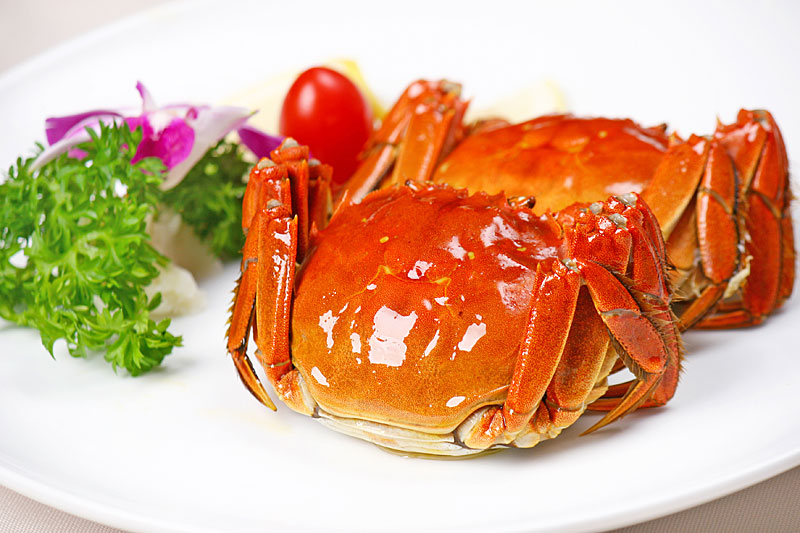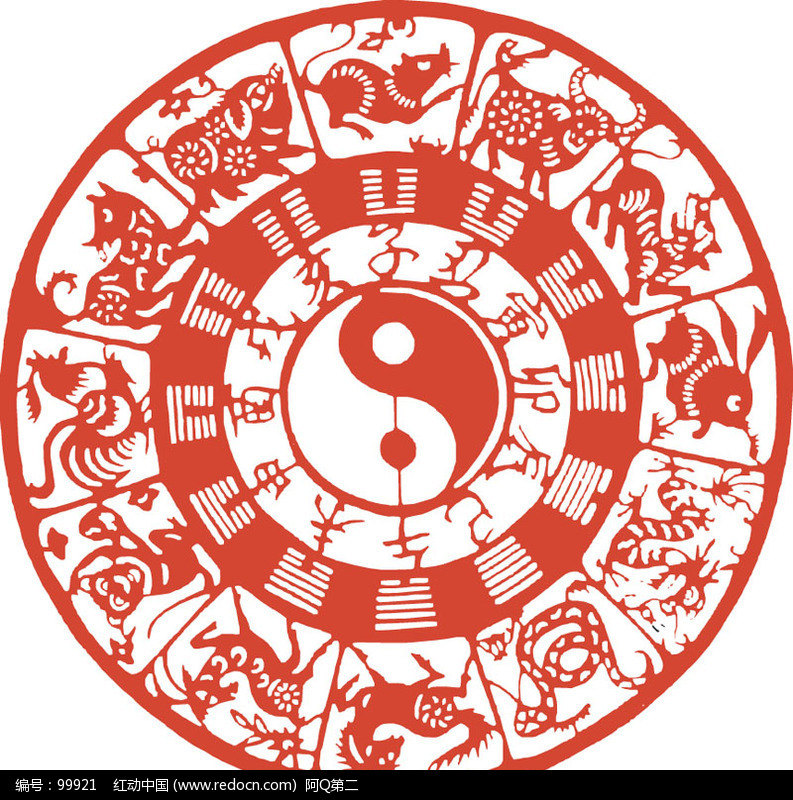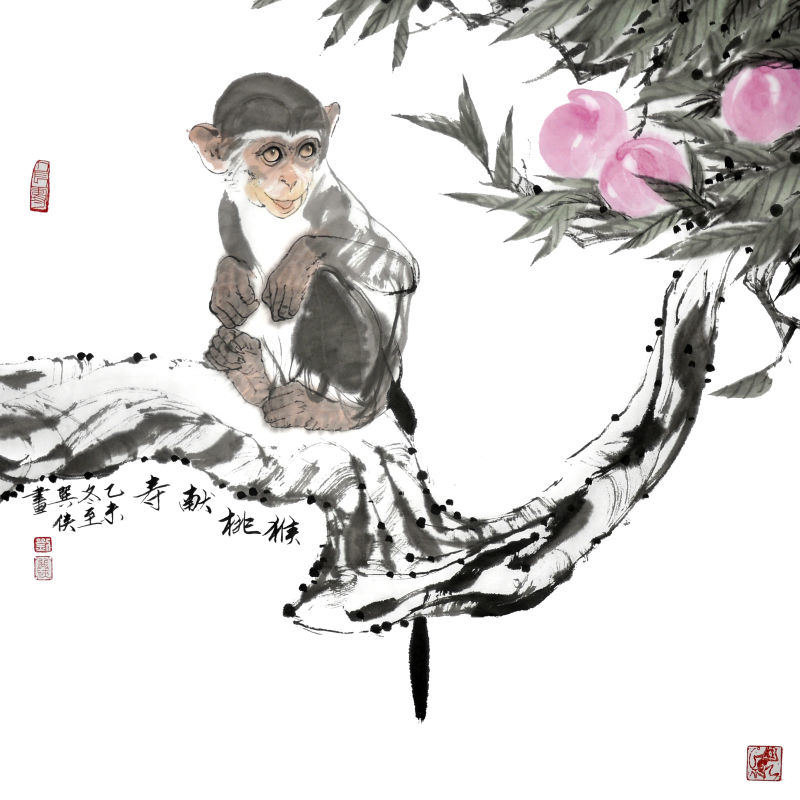February 27th, 2016 |
Published in
CCFSO by admin
Every fall season, some select vendors in Shanghai showcase live blue gray crabs bound by straws on the street, inside shops and even in airports! Mitten Crabs are available in the Shanghai and Hong Kong regions for a short period of time are cost about $100 CAD per kilogram. It may seem very strange to sell crabs at hefty prices out in the open, but once you pop these creatures in the steamer, you’ll find out why foodies love them so much. Not only is the meat succulent, but the roe is also divine. The popular, tiny, roe-filled steam buns are made from this type of crab. These seasonal delicacies are great gifts to people who don’t live near Shanghai. Vendors even take pre-orders before the season starts for quality crabs. All you have to do is dip the freshly steamed crab meat in Chinese vinegar with minced ginger. Even Gordon Ramsay loves this crab. Trust me, it’s worth the effort. Watch here: https://www.youtube.com/watch?v=AAxm7JpeTVU
Shanghai Mitten Crab

By – Tracy Tian
February 20th, 2016 |
Published in
CCFSO by admin

In the previous post, we mentioned that 2016 is called the Year of Monkey. In daily life, the 12 zodiacs, all represented by animals, are used quite a lot. For example, I once impressed my Canadian roommate by guessing her Chinese zodiac sign when she told me her year of birth!
As you might expect, there is a story behind the 12 zodiac animals to explain how they were chosen. It goes as follows. Once upon a time, the Jade Emperor – the dominant God in Chinese culture – invited animals to participate in a race in order to become Guardians of Heaven. The first 12 animals to cross the Heavenly Gate, the finish line, would become Guardians.
The rat finished the race first and therefore became the first animal of the Chinese zodiac. As the legend goes, a river with a swift current crossed the race track. When he arrived at the river, the rat found himself stuck as he was unable to cross the obstacle. So, he climbed on the back of the ox, close behind. When the ox was about to reach the Heavenly Gate, the rat jumped down at the feet of the Jade Emperor, wittingly beating the ox who became the second animal of the zodiac. 10 other animals successfully finished the race: in order, the tiger, the rabbit, the dragon, the snake, the horse, the sheep, the monkey, the rooster, the dog and the pig. These 12 animals therefore formed the Chinese zodiac.
Another twist to this traditional legend is the story of the cat and the rat. According to the story, the reason there is no cat in the zodiac is that, on the day of the race, the cat decided to doze off and asked the rat to wake him up in time for the race. Unfortunately for the cat, the rat did not, and he overslept, missing the race. Next time you see a cat pouncing at a mouse or a rat, it might well be that the cat is still resentful for missing the race!
By – Nancy
February 17th, 2016 |
Published in
CCFSO by admin

Happy Chinese new year, everyone! As what people say in Chinese, “Hou Nian Da Ji”, I wish you all a prosperous year in the year of monkey!
, Monkey in English may have a negative annotation (e.g. “monkeying around” or “un ape”), the monkey is actually an adorable creature in Chinese culture. They are often considered as a smart animal, thus calling people “a monkey” in the Chinese context is compliment for witty people. This is especially in a situation with children — calling small children “little monkey” is a great compliment. In addition, since the word “monkey” is a homonym of “high official” in Chinese, monkeys are considered as a good omen for promotion. This results in monkeys becoming a constant motif in ancient Chinese paintings.
The most famous image of the monkey is probably the Monkey King in the Chinese novel, Journey to the West, written in the 16th century. In the novel, one of the protagonists is Sun Wukong, a monkey later to be recognized as the Monkey King. Throughout the novel, Sun Wukong was described with the typical characteristics of a hero: brave, clever, loyal and righteous. As a monkey, Sun Wukong has developed various supernatural feats which enable him the power to fight against the heaven and protect other protagonists from numerous demons. In fact, the Monkey King has become a symbol in Chinese culture: his stories have been adapted into various art forms, such as Peking opera, television drama,and anime. Furthermore, some scholars even compare Sun Wukong to Hanuman, a Hindu God in the form of a monkey, who assisted the Hindu God Rama into defeating the demon. Well, besides the idea of monkey as a hero, Chinese people love monkeys just because they are SOOO cute!
By – Nancy
February 11th, 2016 |
Published in
CCFSO by admin
I still remember my first Christmas in Canada: a great present packed with surprises. The biggest surprise for me is how people have been looking forward for Christmas: just look at all those lovely advent calendars! Well, for Chinese people, the biggest event in Winter is perhaps none other than the Chinese New Year. Similar to how we count down Christmas in Canada, Chinese people also have their own ways of counting down the new year.
In China parents and grandparents teach children a nursery rhyme which contains a countdown of the Chinese New Year, which describes what kind of chores to be done on certain days. Although these nursery rhymes vary from different regions, most of the contents remain the same—all the nursery rhymes indicate three common things.
The first thing is that the Chinese New Year starts really early: all of them show that the start of the preparation is on December the 23rd in the lunar calendar, which is the Kitchen God’s day. Some rhymes even mention the La Ba Festival as the beginning of the preparation period.
The second thing is that the day following the Kitchen God’s day is the time for families to clean the household. This is because Chinese people believe that cleaning can sweep away bad luck from the previous year out of their houses. In some nursery rhymes housecleaning chores also include writing and decorating Chinese couplets— two poetic lines expressing blessings of the New Year.
The third thing is that apart from chores involving housecleaning, other chores include largely food preparation for the Chinese New Year feast. In fact, the food mentioned in these rhymes — tofu, chicken, and fish—have a deep meaning regarding to the Chinese New Year. In Chinese culture, people believe that the Jade Emperor will investigate families before the new year, and eating tofu is a sign of living a humble and modest life. As for chicken and fish, they are homophones of Chinese blessings “lucky” and “rich”.
Right now, I still can remember the nursery rhyme that was taught by my mother. Like Christmas carols, it reminds me of how my parents prepare special food for the Chinese New Year (in my case a special Chinese sausage). Even though I am not in China now, I still try to follow the rhyme to cook up something special and store it for my Chinese New Year dinner!
By – Nancy


